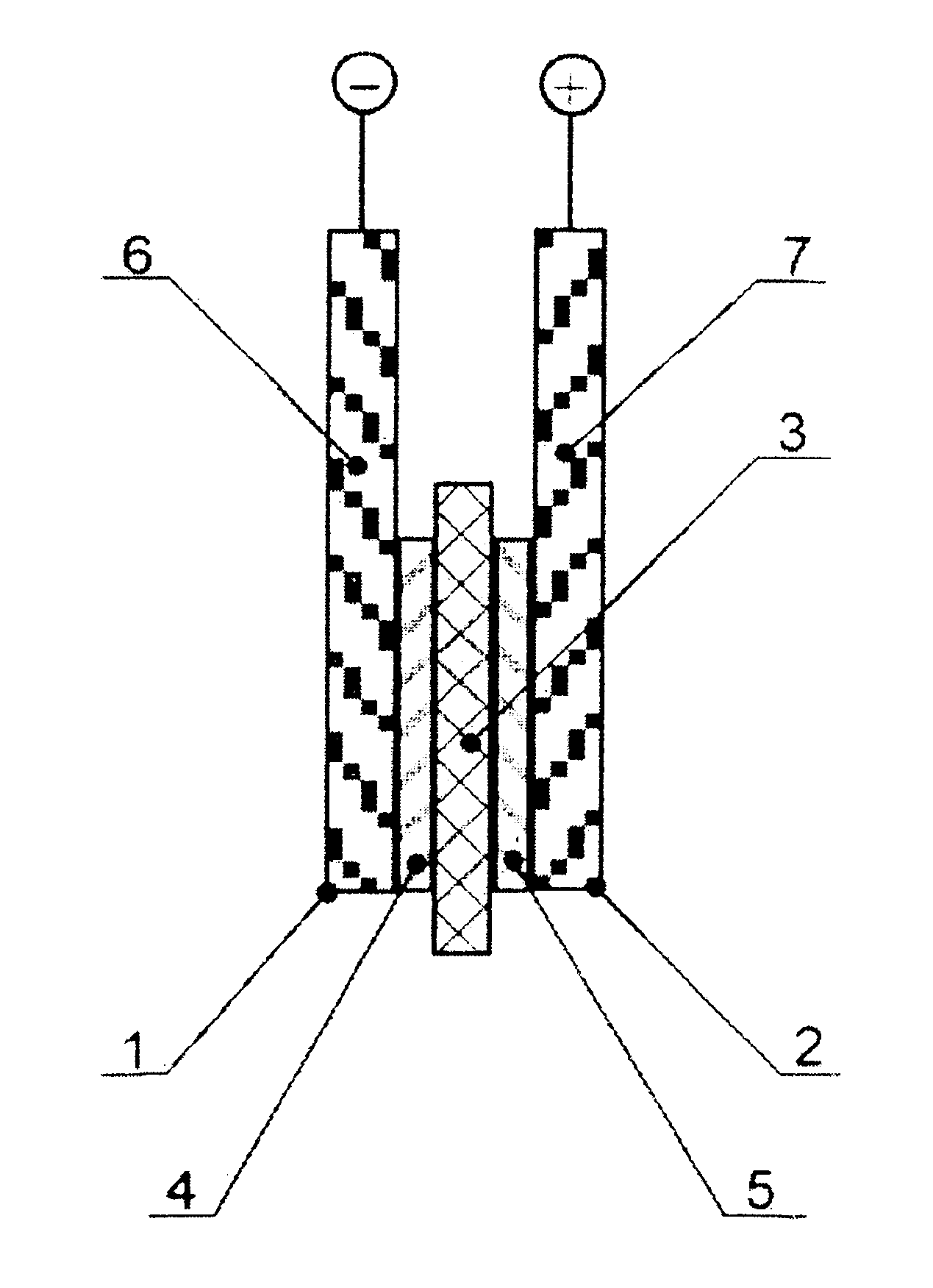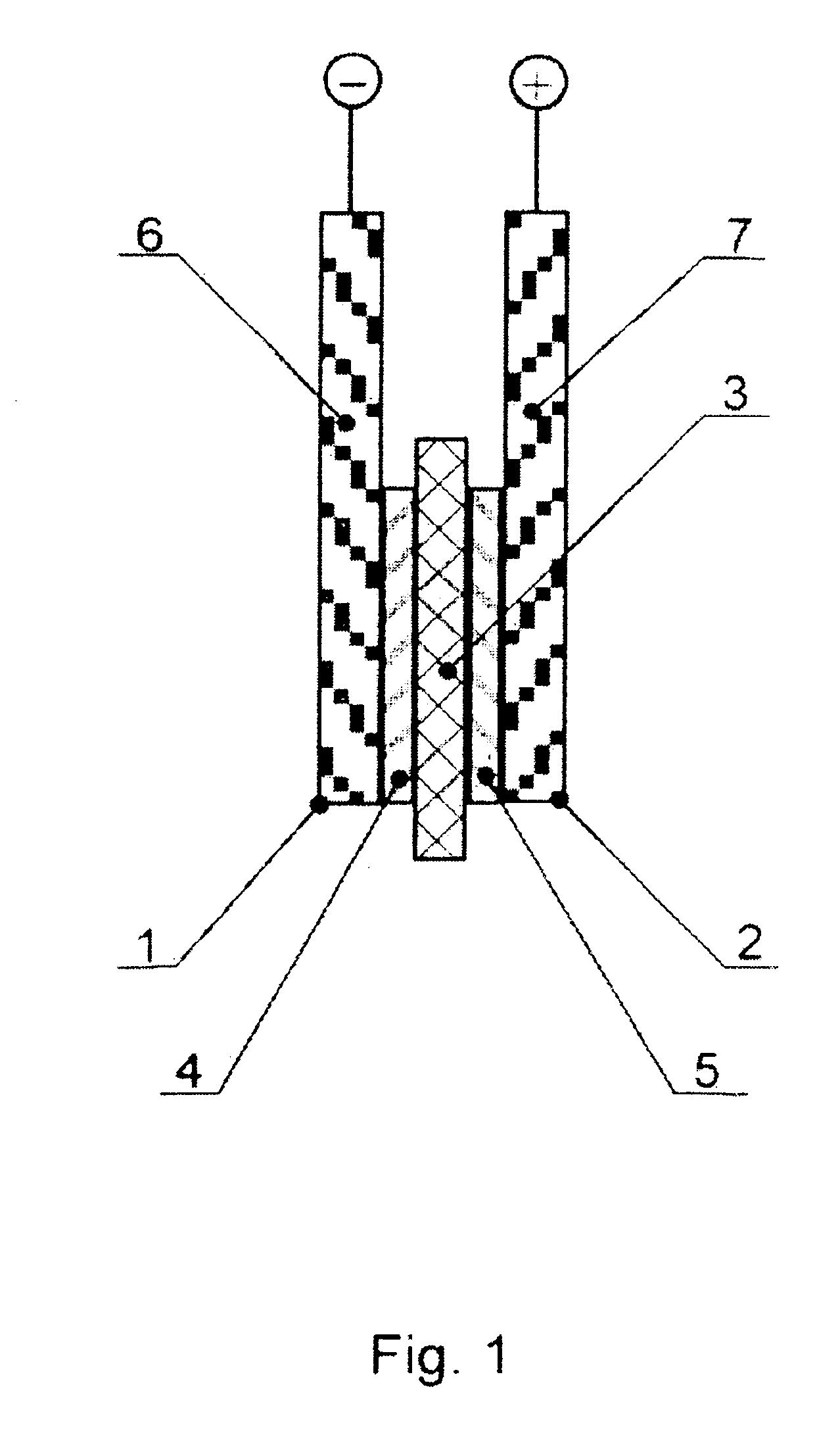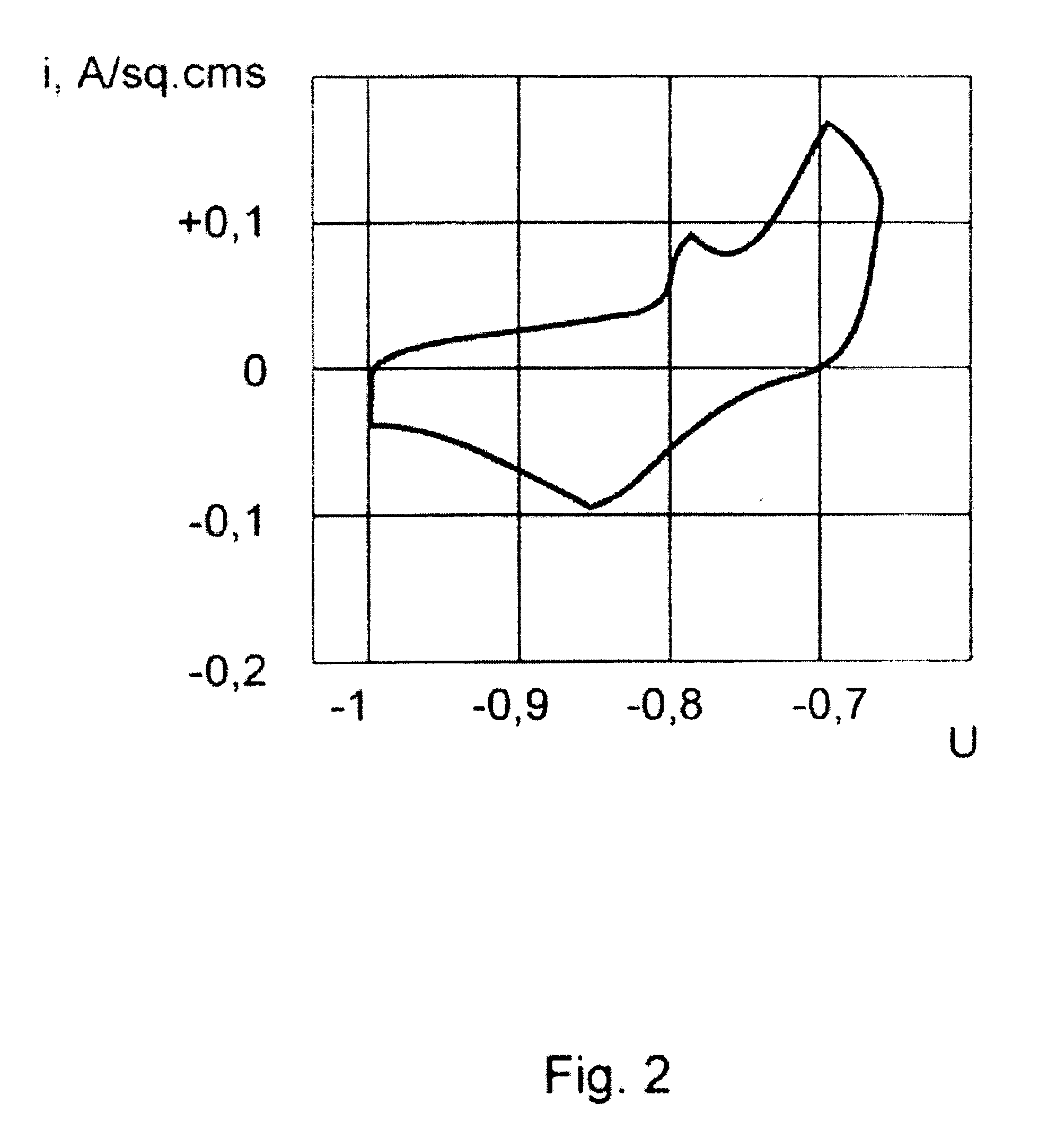Electrochemical energy storage device of high specific power and electrodes for said device
- Summary
- Abstract
- Description
- Claims
- Application Information
AI Technical Summary
Benefits of technology
Problems solved by technology
Method used
Image
Examples
example 1
The negative electrode is obtained by electrochemical deposition (electrodeposition) of nickel on the backing made of rolled nickel foil 25 μm thick under conditions given in Table 1. The composition of the obtained electrolytic alloy (deposit)—Ni0.67O0.13H0.2—was defined by gas analysis of the deposit. Specific charge of the electrode was defined by discharge curves at galvanostatic discharge of the electrode in 30% KOH solution. Prior to discharge the electrode was held at the potential of minus 1.0 V against mercury oxide reference electrode during 5 minutes. Discharging with current density of 0.1 A / cm2 continued until attainment of potential of minus 0.6 V. The discharge curve was plotted by a high speed recorder. The specific charge was defined by multiplying the time of discharge in seconds by the current density 0.1 A / cm2. At deposit thickness of 25 μm (mass being 20 mg / cm2) specific charge of the electrode is 2.3 C / cm2 or 115 C / g. This value is five times higher than corres...
example 2
The negative electrode is obtained as in example 1 but in a different electrolyte and under different conditions of electrochemical deposition (see Table 1). Composition of the obtained electrolytic sediment is Ni0.63O0.15H0.22, mass is 17 mg / cm2, specific charge is 165 C / g which is higher than in example 1.
example 3
The negative electrode is obtained (see Table 1) by electrodeposition of nickel-cobalt alloy on polished titanium backing with following mechanical separation of the deposit from the backing (galvanoplastic method). Cobalt chloride was added to the electrolyte. Composition of the obtained electrolytic deposit is Ni0.52Co0.10O0.015H0.23, mass is 17 mg / cm2, specific charge is 170 C / cm2. The deposit separated from the backing is plastic and can be used as an electrode without any additional collector.
PUM
 Login to View More
Login to View More Abstract
Description
Claims
Application Information
 Login to View More
Login to View More - R&D
- Intellectual Property
- Life Sciences
- Materials
- Tech Scout
- Unparalleled Data Quality
- Higher Quality Content
- 60% Fewer Hallucinations
Browse by: Latest US Patents, China's latest patents, Technical Efficacy Thesaurus, Application Domain, Technology Topic, Popular Technical Reports.
© 2025 PatSnap. All rights reserved.Legal|Privacy policy|Modern Slavery Act Transparency Statement|Sitemap|About US| Contact US: help@patsnap.com



